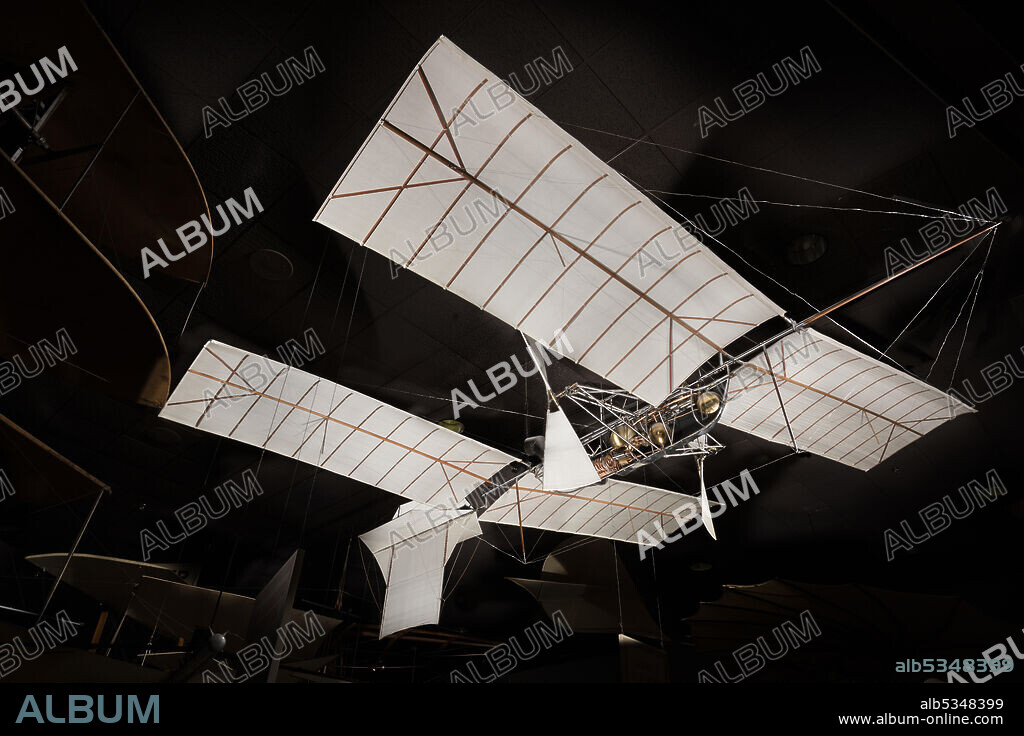alb5348399
SMITHSONIAN INSTITUTION. Langley Aerodrome Number 5,1896. Creator: Smithsonian Institution.

|
Zu einem anderen Lightbox hinzufügen |
|
Zu einem anderen Lightbox hinzufügen |



Haben Sie bereits ein Konto? Anmelden
Sie haben kein Konto? Registrieren
Dieses Bild kaufen.
Nutzung auswählen:

Autor:
Titel:
Langley Aerodrome Number 5,1896. Creator: Smithsonian Institution.
Untertitel:
Siehe automatische Übersetzung
Model of the unpiloted, tandem-wing experimental aircraft built and tested by Samuel P. Langley. One one-horsepower, one-cylinder steam engine turning two pusher propellers via geared transmission system. Silk covering. Natural fabric finish; no sealant or paint of any kind. Samuel Pierpont Langley became the third Secretary of the Smithsonian Institution in 1887. In 1891, he began experiments with large, tandem-winged models powered by small steam and gasoline engines he called aerodromes. After several failures with designs that were too fragile and under-powered to sustain themselves, Langley had his first genuine success on May 6, 1896, with his Aerodrome Number 5. It made the world's first successful flight of an unpiloted, engine-driven, heavier-than-air craft of substantial size. It was launched from a spring-actuated catapult mounted on top of a houseboat on the Potomac River near Quantico, Virginia. Two flights were made on May 6, one of 1,005 m (3,300 ft) and a second of 700 m (2,300 ft), at a speed of approximately 40 kph (25 mph). On both occasions, the Aerodrome Number 5 landed in the water, as planned, because, in order to save weight, it was not equipped with landing gear.
Persönlichkeiten:
Bildnachweis:
Album / Heritage Art/Heritage Images
Freigaben (Releases):
Bildgröße:
8688 x 5792 px | 144.0 MB
Druckgröße:
73.6 x 49.0 cm | 29.0 x 19.3 in (300 dpi)
Schlüsselwörter:
 Pinterest
Pinterest Twitter
Twitter Facebook
Facebook Link kopieren
Link kopieren Email
Email
